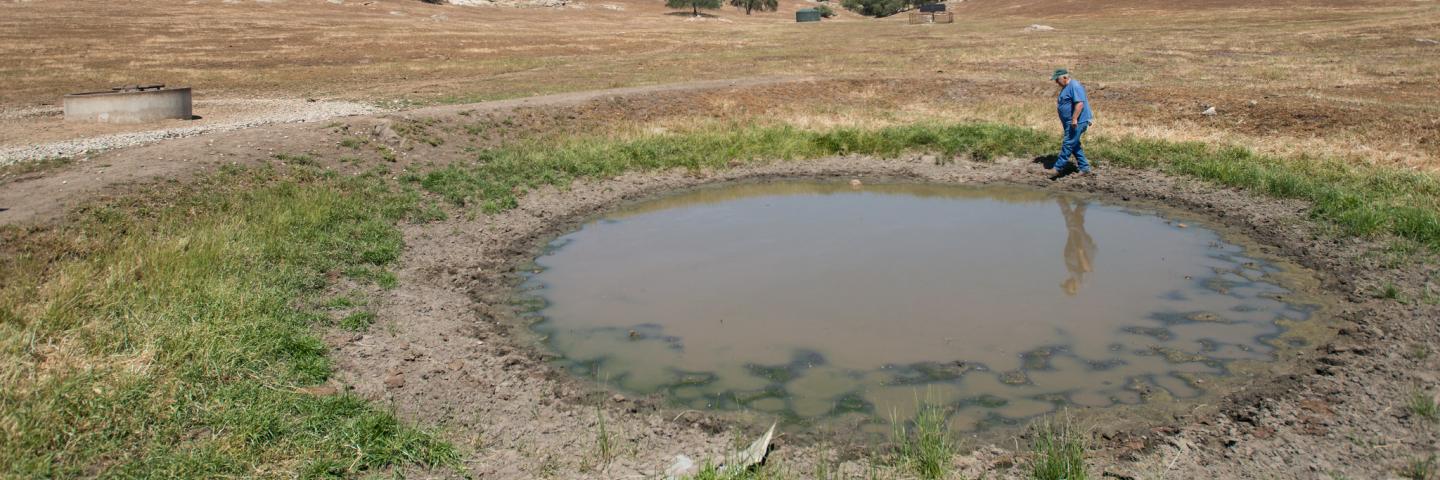
Freshwater harmful algal blooms can produce toxins that are harmful to humans, livestock, working animals, and pets. NRCS has several conservation practices that may be useful in protecting animals and people by restricting access to contaminated water or providing alternate water sources.
The ABCs of HABs
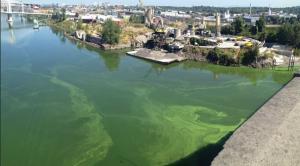
Freshwater harmful algal blooms (HABs) are usually caused by rapid growth of blue-green algae (known as cyanobacteria) in water bodies such as lakes, ponds, and streams. These organisms can produce toxins (known as cyanotoxins) that are harmful to humans, livestock, working animals, and pets. Contacting or ingesting contaminated water (including water spray or mist) can result in irritation, illness, or even death.
Cyanobacteria are naturally found in water bodies, so they cannot be eradicated. Instead, it’s important to understand how and why blooms occur. Cyanobacterial blooms and their potential toxicity often are a result of excess nutrients, such as phosphorus and nitrogen, in water bodies. Excess nutrients can come from adjacent agricultural lands, livestock waste, and leaky septic systems, among other sources. HABs typically form in summer, when warm, nutrient-rich, stagnant waters and more frequent sunlight increase the opportunity for their growth.
Treatment of current HABs involves chemical, biological, or mechanical treatment targeted directly at the contaminated waters. Prevention of future HABs involves changing the conditions that favor cyanobacteria, including nutrient management of the surrounding land and trapping or treating nutrient losses to waterbodies..
Risks HABs pose to livestock, working animals, and pets
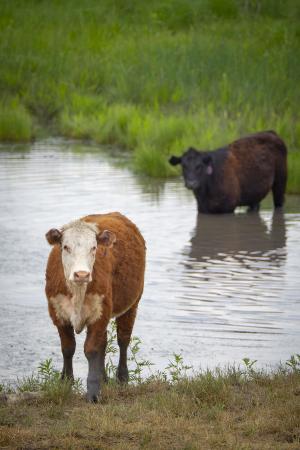
Symptoms* of cyanotoxin exposure in animals include:
- vomiting
- excessive salivation
- fatigue
- staggered walking
- difficulty breathing
- weakness
- convulsions
- liver failure
In severe cases, HAB poisoning can lead to death. Therefore, any potential intoxication needs to be immediately addressed by qualified professionals.
* The USDA Natural Resources Conservation Service (NRCS) is not the authority on HAB symptoms in animals and humans. Please refer to the CDC website for further information, or your state or county health department.
Reduce livestock exposure to HABs
If HABs or cyanotoxins have been detected in a water body, preventing exposure by restricting access is key to ensuring the health and well-being of people, livestock, working animals and pets on the farm.
NRCS has several conservation practices that may be useful to exclude livestock from contaminated waters or provide alternative water sources. Some examples are:
- Fencing (382)
- Pond (378)
- Access Control (472)
- Water Well (642)
- Watering Facility (614)
Steps you can take if a potential exposure to cyanotoxins has occurred:
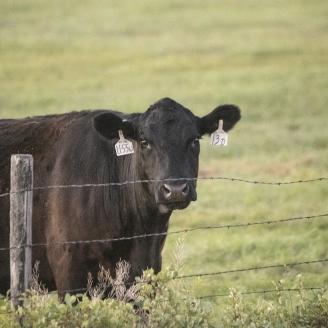
1. Eliminate access.
Eliminate animal access to suspected contaminated water source.
NRCS has several conservation practices that may be useful to exclude livestock from contaminated waters.
- Fencing (382)
- Access control (472)
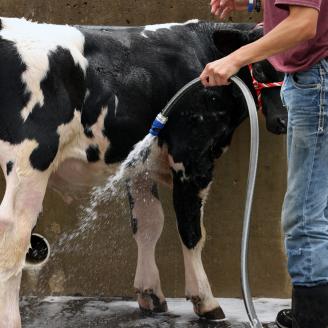
2. Wash animals.
Wash animals with clean water and monitor for symptoms of exposure to cyanotoxins. Isolate any animals exhibiting symptoms and seek veterinary care as soon as possible.
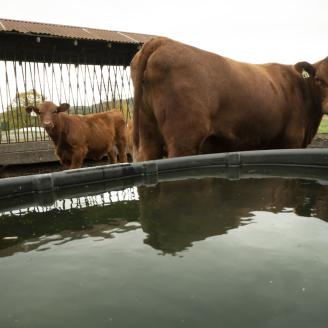
3. Provide an alternative water source.
An alternative source of livestock drinking water might be needed.
NRCS has several conservation practices that may be useful to provide alternative water sources. For example:
- Water well (642)
- Watering facility (614)
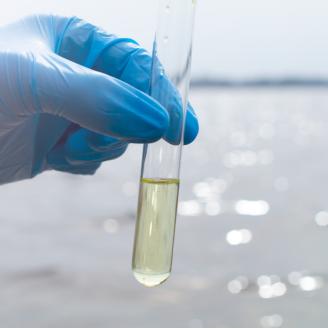
4. Get help with water testing.
Contact the appropriate state agency for sampling and testing guidance to test the water source for HABs and cyanotoxins.
It is not safe for landowners to sample the water themselves without proper personal protective equipment and procedures.
5. Monitor the waterbody.
If a HAB occurs, there is potential for recurrence. Therefore, the waterbody should be monitored.
6. Adopt conservation practices to reduce risk of exposure.
Adopt conservation practices that reduce the risk of livestock exposure to HABs and prevent and reduce nutrient loading to waters to minimize the risk of future HABs occurrences.
NRCS has several conservation practices that may be useful to exclude livestock from contaminated waters or provide alternative water sources. Some examples are:
- Fencing (382)
- Ponds (378)
- Access Control (472)
- Water Well (642)
- Watering Facility (614)
Voluntary Conservation Works to Improve Water Quality
Working in partnership with USDA’s Natural Resources Conservation Service (NRCS), farmers are using proven conservation practices to help improve water quality downstream. Our customers are stewards of our nation’s farmland, voluntarily stepping up to the plate to make an impact. They are improving the natural resources in their communities while at the same time boosting the health of their operations for the future.
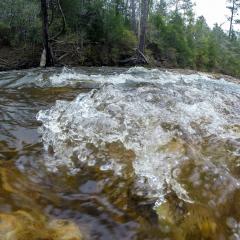
For more information
To learn more about how NRCS can help you protect your livestock from harmful algal blooms or for help with other natural resource concerns, contact your local NRCS office.
Contact
If you're a farmer or rancher who would like to learn more about how NRCS can help address HAB concerns or other natural resource concerns on your land, contact your local NRCS office.

